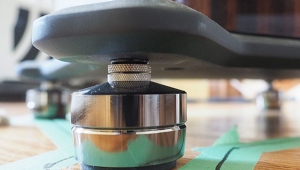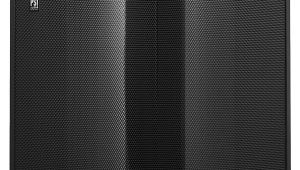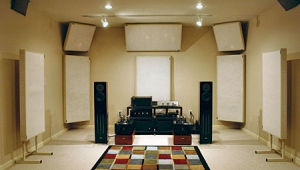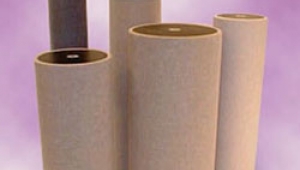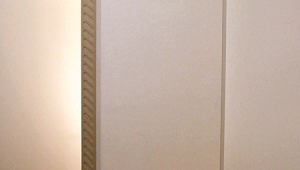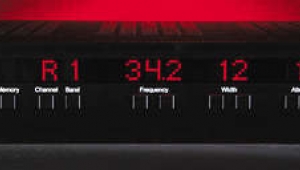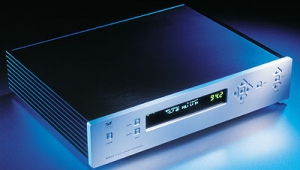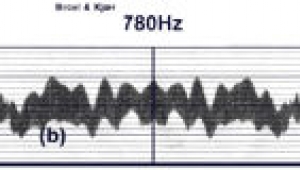| Columns Retired Columns & Blogs |
TacT Audio RCS 2.0 digital equalizer/preamplifier Measurements
Sidebar 4: Measurements
As supplied for review, the TacT RCS 2.0 comprises three separate components: a D/A processor, an A/D converter, and a digital equalizer. I therefore examined the TacT's measured performance in each of those regions.
Looking first at the D/A converter section with the digital EQ set to Bypass, the RCS 2.0's maximum analog output level was 1.671V from the single-ended outputs, 3.356V from the balanced, with the volume control set to "93.9," the unity-gain setting. (The volume control goes up to an indicated "99.9"; ie, a maximum gain of 6dB, in accurate 0.1dB steps.) The polarity was non-inverting from both sets of outputs and the source impedance was very low, at 33 ohms single-ended, 66 ohms balanced.
The TacT locked on to datastreams with sampling frequencies up to 96kHz, though it was bit fussy about the cables used at 96kHz. The audioband frequency response (fig.1, lower pair of traces) is flat, with a slight (0.2dB) rise at 20kHz. However, the processor didn't recognize the datastream flag when fed pre-emphasized data, with the result that the appropriate de-emphasis was not applied (fig.1, upper traces). This error is becoming increasingly common these days, but so few CDs are pre-emphasized that it will probably not be an issue. Nevertheless, I would have liked to see proper design here.
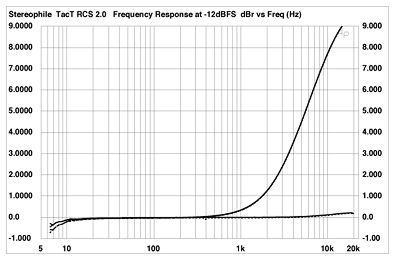
Fig.1 TacT RCS 2.0 D/A module, frequency response at -12dBFS, with emphasis (top) and without emphasis (bottom). (Right channel dashed, 0.5dB/vertical div.)
At a 96kHz sample rate, the response continued to rise slightly above the audioband, reaching a maximum of 0.45dB at 35kHz, then rolling off by -0.16dB at 45kHz before dropping like a stone above 47kHz. Crosstalk (fig.2) is buried in the noise floor below 2kHz, but separation decreases slightly in the top three octaves due to the usual capacitive coupling between channels.
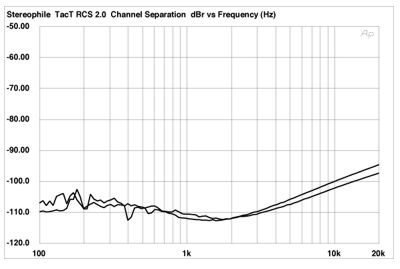
Fig.2 TacT RCS 2.0 D/A module, channel separation ref. 0dBFS (10dB/vertical div.).
Fig.3 shows spectral analyses of the processor's analog noise floor fed dithered data representing a 1kHz tone at -90dBFS with both 16- and 24-bit word lengths. The increase in bit depth drops the noise by up to 16dB, suggesting a dynamic range of between 18 and 19 bits, which is excellent. Even though the RCS 2.0 might well apply some attenuation in the digital domain when used as an equalizer, it will not reduce resolution unless the attenuation is significantly greater than 16dB.
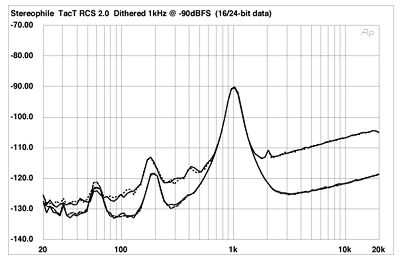
Fig.3 TacT RCS 2.0 D/A module, 1/3-octave spectrum of dithered 1kHz tone at -90dBFS, with noise and spuriae (from top to bottom): 16-bit data, 24-bit data (right channel dashed).
Fig.4 shows wider-band spectral analyses for "digital black" data. The noise floor rises above 30kHz, due to the D/A converter's noise-shaping topology. However, peaks in both these graphs can be seen at 60Hz, 180Hz, and 300Hz. While these are still very low in level, they are probably due to unwanted magnetic coupling from the power-supply transformer into the analog audio circuitry.
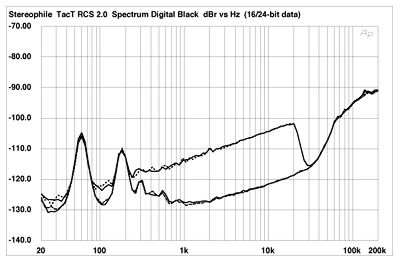
Fig.4 TacT RCS 2.0 D/A module, 1/3-octave spectrum of "digital black," with noise and spuriae (from top to bottom): 16-bit data, 24-bit data (right channel dashed).
- Log in or register to post comments
